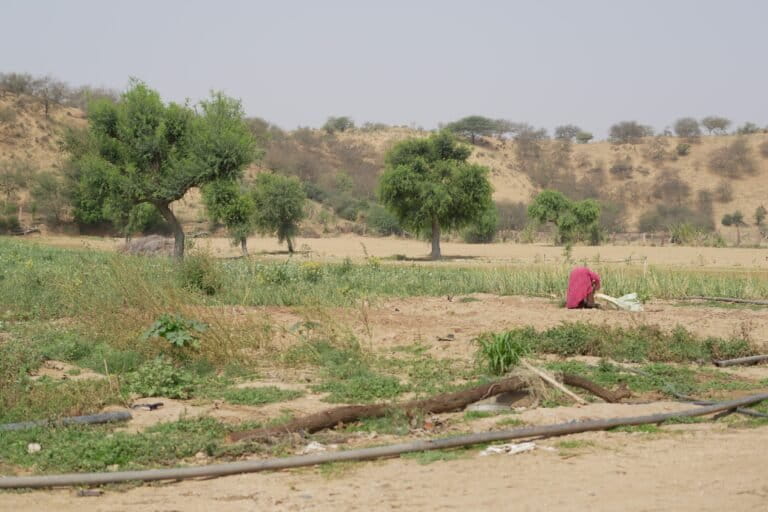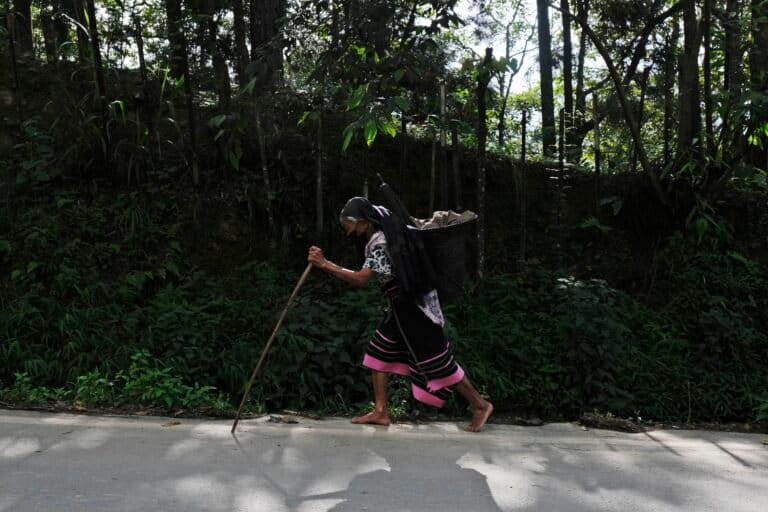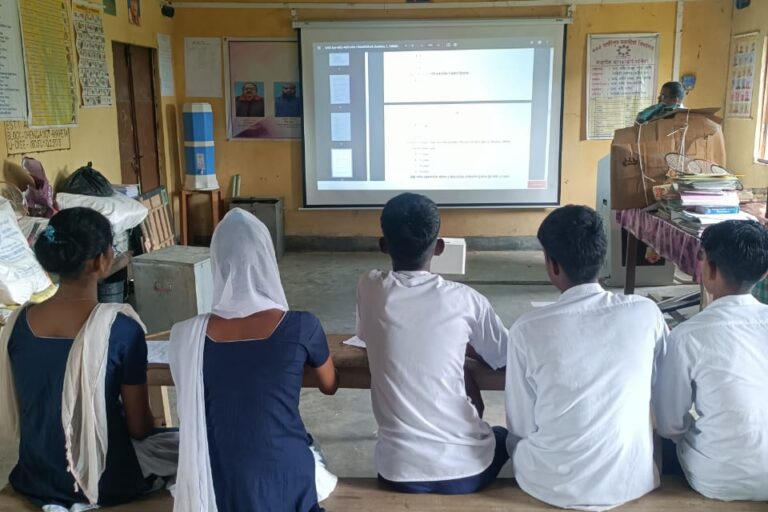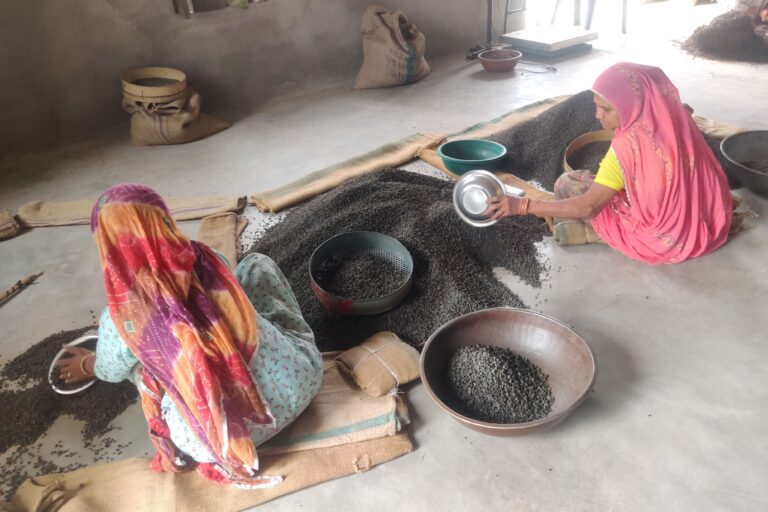- Communities that previously lived in and around Jharia coalfields in Jharkhand were resettled to the Belgaria township because of Jharia’s underground fires and sinking land.
- However, the people now have to deal with lack of employment opportunities and the lack of basic amenities in the resettled colony.
- Experts highlight the need for long-term employment and welfare plans by the government, specifically designed for the resettled population.
Jharia is among the oldest coal mining regions of India. Located in the Dhanbad district of Jharkhand, it is infamous for rampant underground fires and sinking land owing to the large deposits of coal beneath it. The first underground fire was recorded in 1916. There is also the problem of irrational decommissioning of abandoned mines.
A few years ago, the government had resettled the local people living in the vulnerable areas of Jharia, to a new township named Belgaria, around seven kilometres away. However, new challenges have come up for the resettled colony residents, after the move.
“If we knew about the conditions in Belgaria we could have avoided coming here,” a 60-year-old woman from the colony, who wishes to remain anonymous, said, referring to the problem of unemployment in the new location. Her son Ali, told Mongabay-India, “A lot of national and international media often come here to report. They come and go, but nothing changes here.”
Reduced employment opportunities
Though Belgaria is seven kilometres away from Jharia, due to the lack of adequate transport connectivity, the residents find it difficult to commute for work. The employment avenues have also dwindled. A majority of the population earns daily wages and works in the unorganised sector. A good portion of their earnings is often spent in the commute to nearby areas like Dhanbad or Jharia for work. Those who have moved from Jharia, claim that the jobs were easily available there. With income reduced, disagreements and domestic discord has also increased.
Suresh Bhuiyan moved to Belgaria six years ago from Dabri colony. He previously used to work in the private sector through a tender that he received from the railway department. Now, he has moved even further, about a thousand kilometres away, to Chennai in Tamil Nadu, to earn a livelihood for his family.
Similar are the stories of many others from this resettled village. Belgaria was created for the families who were living in Jharia and adjoining areas, affected by underground fires. The government has earmarked 595 spots in Jharia which are affected by underground fires and sinking of land. Apart from this, a total of 868 public places have been marked as affected areas due to fires and sinking of land. This includes banks, marketing complexes, religious sites and others. Some media reports have claimed Jharia to be the biggest burning area of the world.

When questioned about the issue of employment, Baliapur Block Development Officer (BDO) Amit Kumar told Mongabay-India, “Yes. Such conditions exist in such areas. We plan to connect the unemployed with Mahatma Gandhi Rural Employment Guarantee Scheme (MGNREGS) by organising special camps. But our experience is that, people there are not interested to work under MGNREGS.” MGNREGS is an Indian federal government scheme for rural employment where work (mainly labour-intensive) is provided for certain months in a year.
Baliapur Block Programme Officer for MGNREGS, Vishal Kumar, said that till June 2022, a total of 380 people living in Belgaria, registered for MGNREGS but hardly 100 people work under the scheme.
The resettlement plan
Haradhan Roy, the MP from Asansol, was active on the issue of underground fires in the coal-mined areas of Jharkhand and West Bengal and often raised the issue in Indian Parliament and also led several of these cases to courts. He had filed a petition before the Supreme Court, on the issue of rehabilitation of communities living in the danger zones in Jharia and West Bengal’s Raniganj. This led to the creation and implementation of the Jharia Master Plan in August 2009. With this plan, the Belgaria township was created in the Palani panchayat in the Baliapur Block of Dhanbad district.
Under this plan, the works on dousing the fires and resettlement of the aggrieved families were given to the BCCL (Bharat Coking Coal Limited) and the works of underground survey and diversion of other basic infrastructure and resettlement of non-BCCL workers were given to Jharia Rehabilitation and Development Authority (JRDA). BCCL and JRDA were sanctioned Rs. 7,112.11 crores. The funds are released by Coal India Limited (CIL) which comes under India’s Ministry of Coal.
JRDA’s officer-in-charge, Amar Prasad told Mongabay-India, “Through the Jharkhand Livelihood Mission, we are trying to connect the communities with employment.” Asha Kujur, Team Leader of JRDA Project Monitoring Team said that the number of Self-Help Groups (SHGs) this year increased from 30 to 50. Each SHG comprises 12 to 15 women. Their State Livelihood Promotion Society is training them in stitching and embroidery works. Plans are also in the pipeline to train them to make pickles and murabba (preserves).
The Member of Parliament (MP) from Dhanbad, Pashupati Nath Singh however, is of a different opinion. He told Mongabay-India, “This whole concept (of Belgaria resettlement) was wrong. They should have been resettled in areas close to Jharia, where there was no fire so that they could have gotten jobs.”
Besides unemployment, there is also a dearth of basic facilities in Belgaria. Residents told Mongabay-India that water supply to this area is also erratic, the piles of garbage are getting bigger and drains are overflowing. They also complained of cracks on the walls of their houses and degrading roof ceilings.
What does it take to ensure a ‘just transition’?
The demands for decommissioning coal-based plants are increasing around the world. However, concerns are also raised over the fate of several communities who are directly or indirectly dependent on coal mines for their livelihood. The demand for a ‘just transition’ which refers to the justice in energy transition is rising across the globe including in India.
Sandeep Pai, Research Lead at the Center for Strategic and International Studies (CSIS) considers the issues at Belgaria as those related to the transition. He says that the communities who had been largely dependent on coal-based industries for their livelihood for several years, find it tough to opt for other works like the work provided under MGNREGS. “Be it Jharia or any other other coal region, the population there is increasing and implementing a ‘just transition’ is a complex task. If the communities dependent on coal are moving to other regions, there needs to be a long-term policy and diversification of the economy. We need to construct new sectors and undertake skill development exercises,” he explains.
According to a study, India has a total of 284 districts where the whole local economy revolves around coal. This includes 33 such coal regions where the dependency of the local communities on coal is intensive. The fate of livelihood of these people living in such areas are now under lens whereas suggestions are also pouring in from the national and international level on the rehabilitation of these people. Belgaria could prove to be a model for the governments to know on how to proceed in such cases.
Other issues in Jharia that need attention
At a time when the authorities are trying to resettle the communities living in the troubled zones of Jharia, the encroachment and illegal settlements of people in Jharia have also increased. According to government estimates, between 2009 and 2019, the number of illegally settled families have increased by three times. Dhanbad MP Pashupati Nath Singh said, “Jharia coalfield is a large area and there are many regions in it like Katras, Kendua, Sijua. Despite the notice of BCCL, people are coming back and settling here illegally.”

Also, to combat the underground fires, the authorities have taken several steps and the numbers are under control. But air pollution is still an issue. Between 2012 and 2018 the air quality of Jharia has become worse by 1.5 times. If we go by the current data, the health of people living in Jharia could be affected due to poor air quality. The Jharkhand government has prepared an Action Plan to counter air pollution.
This story was first published in Mongabay-Hindi.
Banner image: A landscape view of the Jharia coalfields in Dhanbad. Photo by Rahul Singh/Mongabay.













